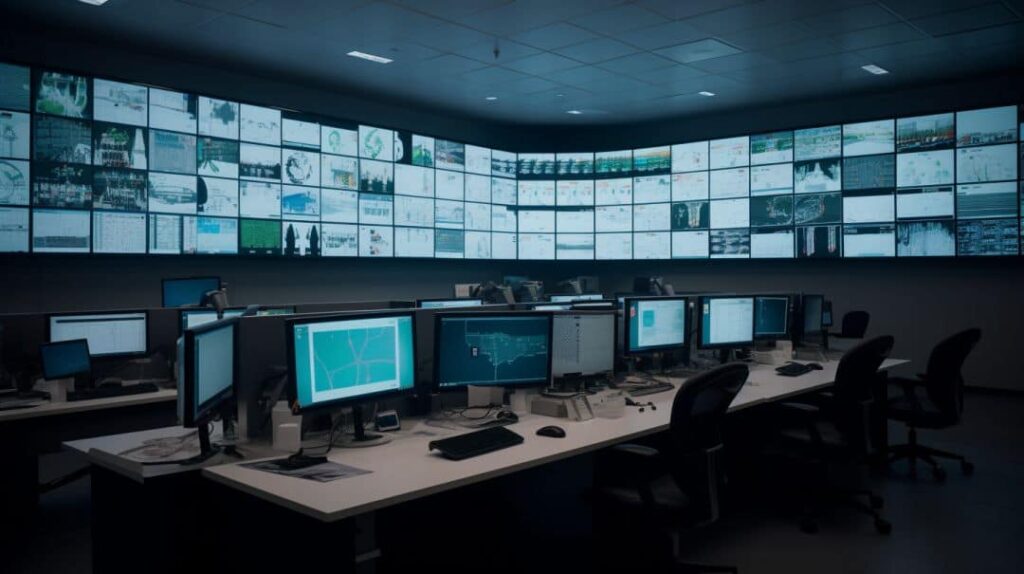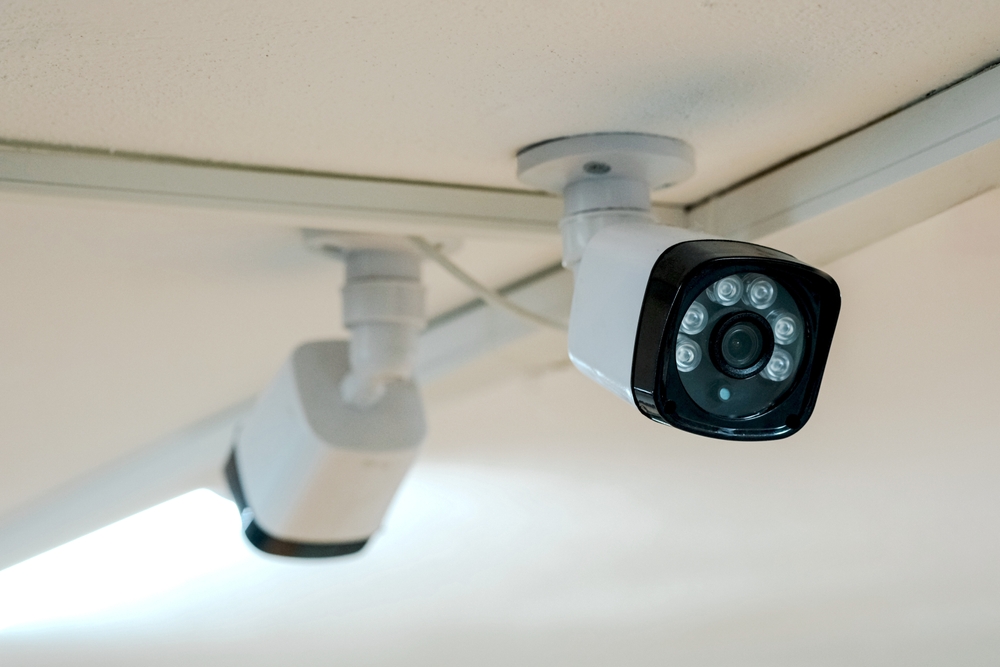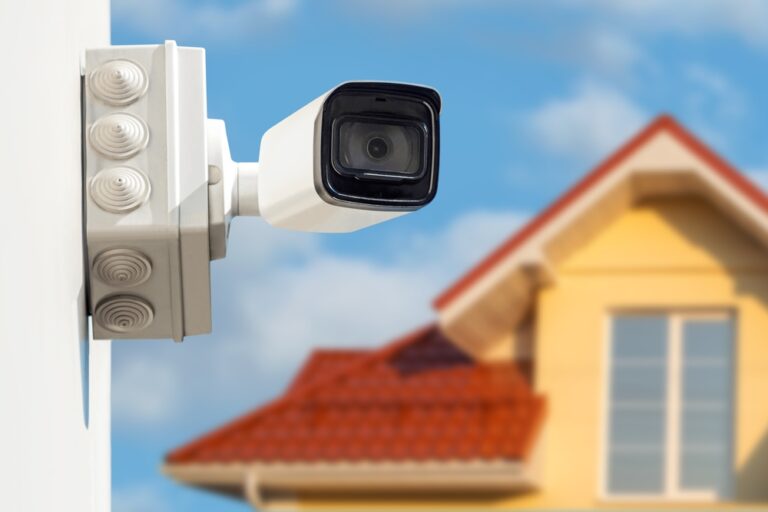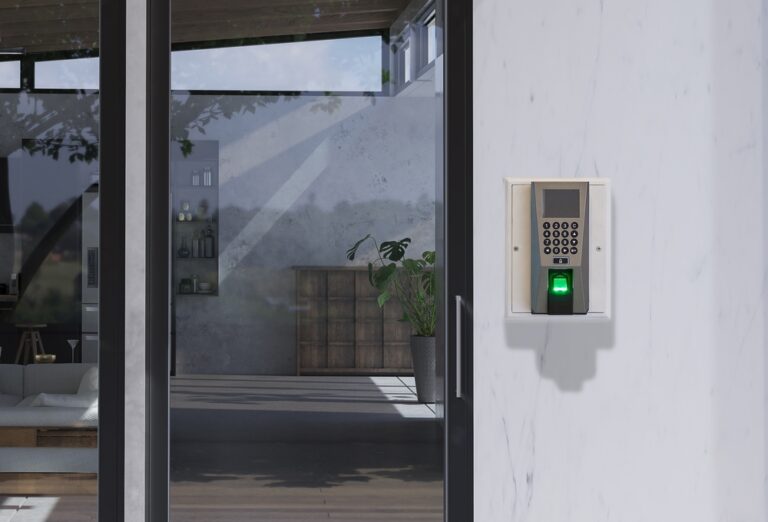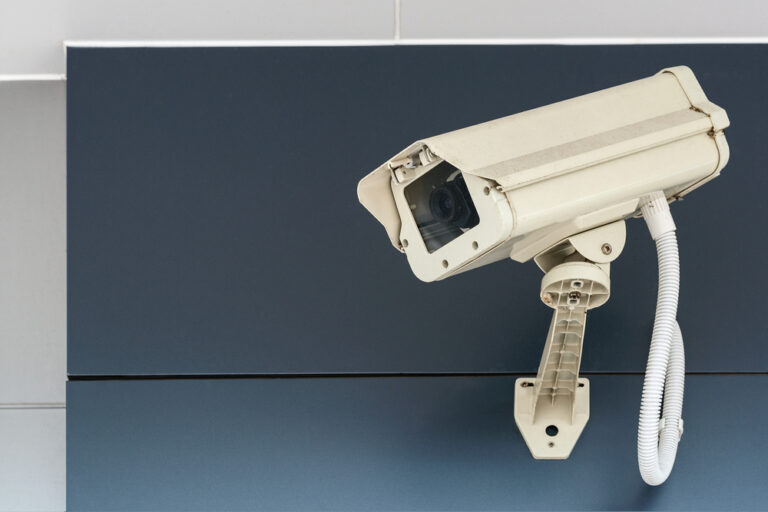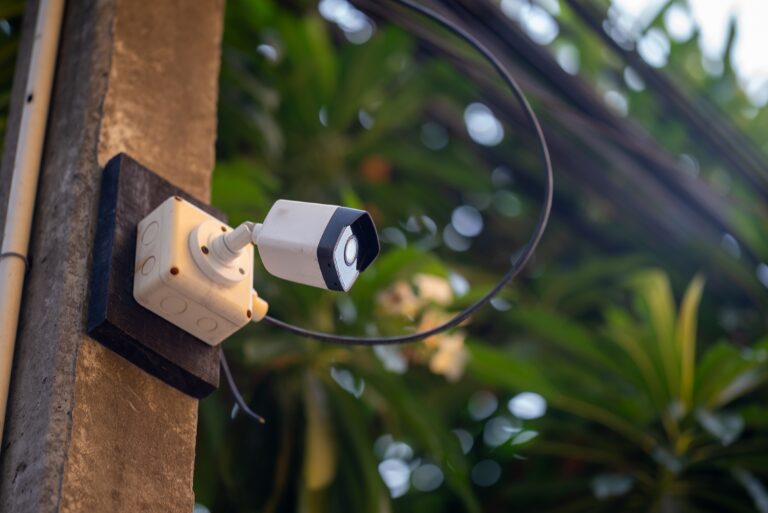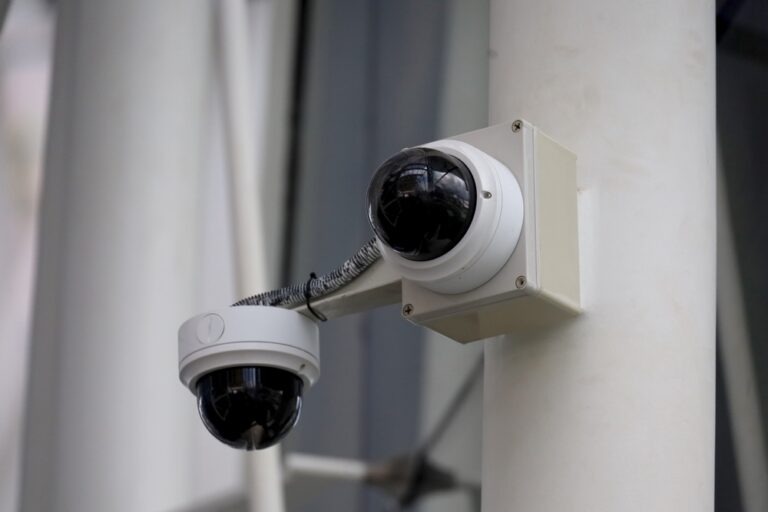- 1) This post will examine how NVRs have revolutionized video surveillance with the following sections:
- 2) What is a Network Video Recorder (NVR)?
- 3) The Role of NVRs in Centralized Video Surveillance Systems
- 4) The Evolution of Video Surveillance Technology
- 5) How NVRs Have Revolutionized Video Surveillance
- 6) Benefits of Using NVRs in Video Surveillance
- 7) Choosing the Right NVR for Your Security Needs
Network video recorders (NVRs) have become a crucial component of modern video surveillance systems. NVRs offer various advantages over older analog surveillance systems, allowing businesses and homeowners to better monitor their premises and improve security.
This post will examine how NVRs have revolutionized video surveillance with the following sections:
| NVR Basics | Advanced Topics |
|---|---|
|
|
By the end, you’ll understand how NVRs have enabled smarter, more scalable surveillance compared to older systems. Jefferson Security Cameras offers professional NVR installation and support to help you select and configure the ideal system. Contact us today to discuss upgrading your video surveillance.
What is a Network Video Recorder (NVR)?
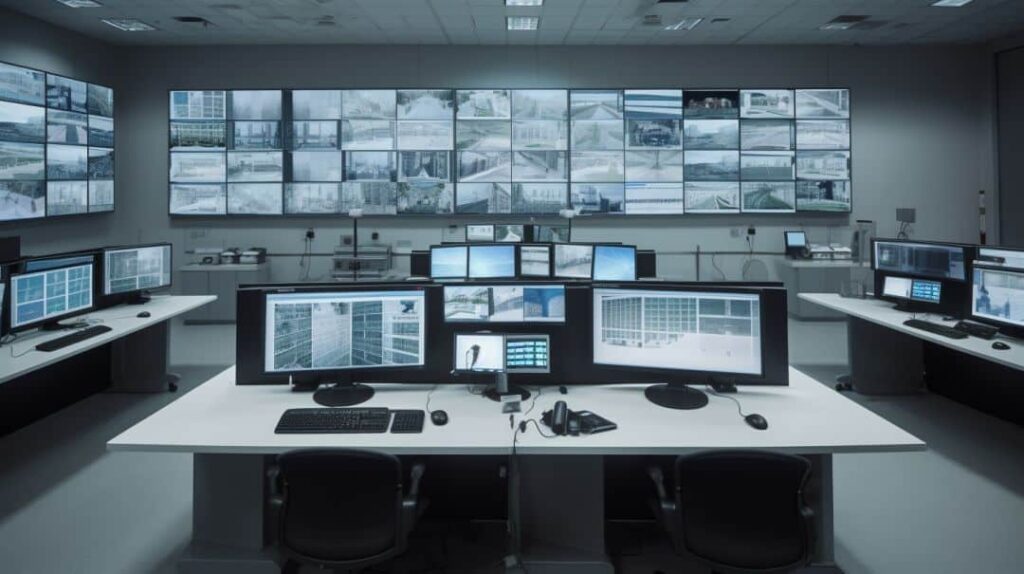
A network video recorder (NVR) is a key component of modern IP camera surveillance systems. An NVR has the following defining features:
- Network-based – Unlike analog DVRs, an NVR connects to IP network cameras to receive and record video footage digitally over a network.
- High storage capacity – NVRs feature large internal hard drives up to tens of terabytes to store high-resolution footage from multiple cameras.
- Monitoring capabilities – Live remote viewing and playback of recorded video is possible on computers and mobile devices through an NVR’s network connection.
- Flexible scalability – Additional IP cameras can easily be added to the network and synced with the NVR. Upgrading storage capacity is also simple.
- Intelligent search – Advanced NVRs have analytics and algorithms to enable searching footage by date, time, motion events, camera, etc.
- Better image quality – Footage is digital rather than converted from an analog signal, so clarity and detail are improved.
- Remote accessibility – Users can securely access live and recorded video remotely via a web browser or mobile app.
- Integration – NVRs can integrate with other security systems like access control, alarms, etc. to enable intelligently automating functions.
A network video recorder is the central hub for modern IP surveillance solutions, offering digital networked capabilities not possible with older DVR technology.
The advanced functionality of NVRs has revolutionized video security:
- Network connectivity enables remote monitoring from anywhere.
- Scalable systems accommodate expanding camera needs.
- Smart search and analysis features enhance utility of footage.
- Higher image quality improves the ability to identify people and incidents.
- Integration with other systems allows for intelligent automation and control.
NVRs have taken surveillance far beyond the isolated analog systems of the past. They allow businesses and homeowners to cost-effectively deploy feature-rich IP camera networks with easy access and management.
The Role of NVRs in Centralized Video Surveillance Systems
NVRs are integral components of centralized, IP-based video surveillance systems:
- Central hub – The NVR is the core device that connects all IP cameras together into one unified system.
- Recording and storage – Footage from all connected cameras is aggregated and stored on the NVR’s hard drives.
- Live monitoring – The NVR enables viewing live feeds from individual or multiple cameras through its client software.
- Playback – Recorded footage from any camera can be quickly retrieved and played back using the NVR’s video management interface.
Benefits of an NVR-based centralized system:
- All cameras can be accessed and managed through a single interface rather than separately.
- Scaling up storage and camera capacity is easy by expanding the NVR’s drives or network.
- Intelligent analytics and automation rules can be applied system-wide.
- Resources like user permissions, camera schedules, video clips, etc. can be managed centrally.
- Remote access to all camera feeds is simplified through the NVR.
The NVR is the brains of a centralized IP surveillance system, allowing complete control and scalability. The NVR’s role is crucial in:
- Aggregating all video footage into a single accessible storage repository.
- Enabling coordinated management of all connected security cameras and system settings.
- Providing efficient centralized access to live and recorded video.
- Allowing easy future expansion of cameras and storage capacity.
- Unlocking system-wide analytics, automation and integration capabilities.
Centralizing an IP system around an NVR unlocks the full advantages of network video surveillance.
The Evolution of Video Surveillance Technology
Video surveillance has come a long way since the early days of CCTV. The technology has rapidly evolved from analog to digital IP-based systems, enabling smarter security camera networks with expanded capabilities. This progression has been driven by key innovations like IP cameras and network video recorders (NVRs).
From CCTV to IP Cameras
Closed-circuit television (CCTV) using analog cameras has been around since the 1950s. These systems relied on point-to-point coaxial cable connections from cameras to monitors or recording devices. Footage from analog cameras is converted into a video signal and transmitted over coax cables to a central location.
Analog CCTV systems have limitations like distance restrictions, susceptibility to signal degradation, and difficulty scaling up. All recording and viewing required manual operation at the DVR device. This made remote access and camera expansion impractical.
IP camera technology revolutionized surveillance by digitizing and networking video. Instead of analog video signals over coax cable, IP cameras use digital data packets over Ethernet. This allows easy transmission of high-resolution footage over greater distances.
Key advantages of IP cameras:
- Flexible wired or wireless installation
- Higher resolution video (up to 4K)
- Remote accessibility via internet
- Power over Ethernet removes need for power cables
- Easy scaling by adding cameras to network
- Two-way audio communication on cameras
- Integration with other IP-based systems
The digitization and networking of security cameras via IP technology unleashed a wave of innovation in video surveillance capabilities.
The Rise of NVRs
A pivotal development was the advent of network video recorders (NVRs). NVRs are the brains of modern IP CCTV systems – they connect all the cameras together into a unified whole.
Whereas analog DVRs simply digitize and record analog footage, NVRs fully utilize IP camera capabilities. Instead of converting analog video to digital for recording, NVRs directly intake digitized video packets from the network.
NVRs provide:
- Centralized management of multi-camera systems
- Scalable storage using large hard drives
- Intelligent analytics like motion search
- Remote viewing on computers and mobile apps
- Flexible access control permissions
- Integration with alarms, access control, POS, etc.
By leveraging NVRs to network and coordinate IP cameras, video surveillance was taken to the next level. Intelligent camera networks with easy remote access and control are now possible.
The digital revolution from CCTV to IP-based systems centered around NVRs established the foundation for the capable security camera solutions available today.
How NVRs Have Revolutionized Video Surveillance
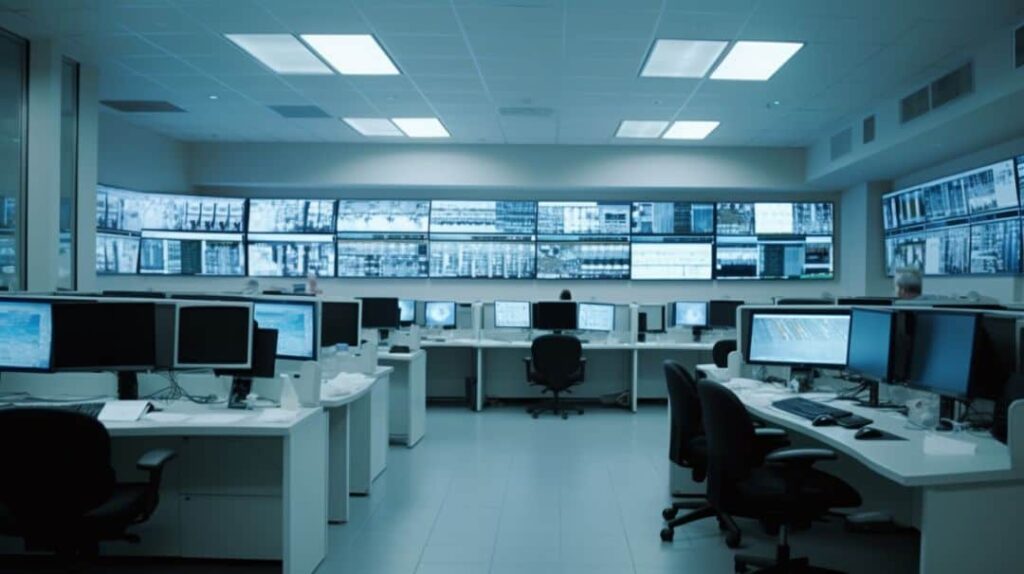
The advent of network video recorders (NVRs) completely transformed video security systems by unlocking the full potential of IP cameras. Here are some of the key ways NVRs have revolutionized CCTV:
Elimination of Dedicated Servers
Early IP camera systems required a dedicated PC server for recording and management. Servers are expensive, require specialized maintenance, and store footage locally.
NVRs integrate all needed server capabilities into a single specialized appliance. This eliminates the cost and complexity of dedicated servers by combining:
- Video recording
- Video management
- Camera connectivity
- Analytics
- Access control
all into one platform purpose-built for surveillance. NVR appliances provide better reliability, control, and scalability than PC servers at a fraction of the cost.
Master and Slave Configuration
NVRs support flexible master and slave configurations for distributed systems across multiple locations.
A centralized master NVR can coordinate multiple slave NVRs across remote sites. The slave devices connect all local cameras and send footage back to the master.
Benefits include:
- Centralized monitoring and management
- Load balancing storage across devices
- Geographic redundancy if connectivity is disrupted
This modular architecture enables seamless operation and oversight of large distributed camera networks.
Cascading NVRs
For very large camera deployments, NVRs can be cascaded together into tiers using the same master/slave concept.
- The master NVR oversees lower-tier slave NVRs
- 2nd Tier slaves connect more NVRs at the 3rd tier and so on
- Footage is automatically routed for storage and viewing based on system hierarchy
Benefits of cascaded NVR tiers:
- Virtually unlimited system scalability
- Localized data storage tiers for efficiency
- Redundancy against NVR failure
- Simplified system administration
Instead of siloed NVRs operating independently, cascading enables a seamless enterprise-grade pyramid system that can seamlessly grow.
Benefits of Using NVRs in Video Surveillance
Network video recorders provide major advantages compared to older DVR technology. Here are some of the top benefits of using NVRs for CCTV systems:
Increased Storage Capacity
NVRs leverage large internal hard drives and RAID arrays to offer massive video storage capacity:
- Hard drives are inexpensive high-capacity storage
- Disk arrays enable redundancy and failure protection
- Add additional drives as needed for more storage
- Onboard RAID manages the storage array
This enables weeks or months of high-definition footage to be stored from multiple cameras:
- 10TB holds over a month of 10 4MP camera feeds
- Arrays like RAID 6 allow drive failures without data loss
- Scalable by adding more drives hot-swappable in the NVR
The abundant low-cost storage enables long-term archiving of video. No need to delete critical footage.
Centralized Management
All connected cameras across a site or organization can be managed through a single NVR interface. This allows convenient system control and oversight:
- View live or recorded video from any camera
- Organize cameras logically into groups
- Control user access rights centrally
- Apply settings like motion detection globally
- Manage schedules and recording parameters
- Generate reports on system health and events
Centralized management saves time and effort compared to managing many standalone DVRs.
Improved Scalability
Adding more IP cameras is a simple plug-and-play process with NVR systems:
- Cameras automatically detected and configured
- Expand storage by adding larger drives
- Upgrade NVR model or add slave units
- Scale systems to hundreds of cameras over multiple locations
- Cascading NVRs enables virtually unlimited camera support
You can cost-effectively expand coverage as surveillance needs grow.
Cost Savings
Despite their advanced capabilities, NVR solutions are very economical:
- NVRs are competitively priced specialized appliances
- Leverage inexpensive Ethernet infrastructure
- Centralized storage saves money over distributed DVRs
- Lower maintenance costs compared to PC servers
- Flexible licensing models (per-channel, per-camera)
- Scalable for moderate startup costs
For the functionality gained, NVR systems deliver excellent ROI through centralized IP infrastructure.
In summary, the savings come from:
- Consolidating recording and storage into a single NVR platform
- Leveraging inexpensive Ethernet networks
- Avoiding costs of analog cabling and converters
- Minimizing IT maintenance needs compared to servers
- Enabling easy scalability as needed instead of overprovisioning
With their optimized architecture, NVRs unlock the full potential of IP video at a very reasonable total cost of ownership. When factoring in benefits like remote accessibility, intelligent analytics, and easy expansion, NVRs are extremely cost-effective for building feature-rich and future-proof video surveillance systems.
Choosing the Right NVR for Your Security Needs
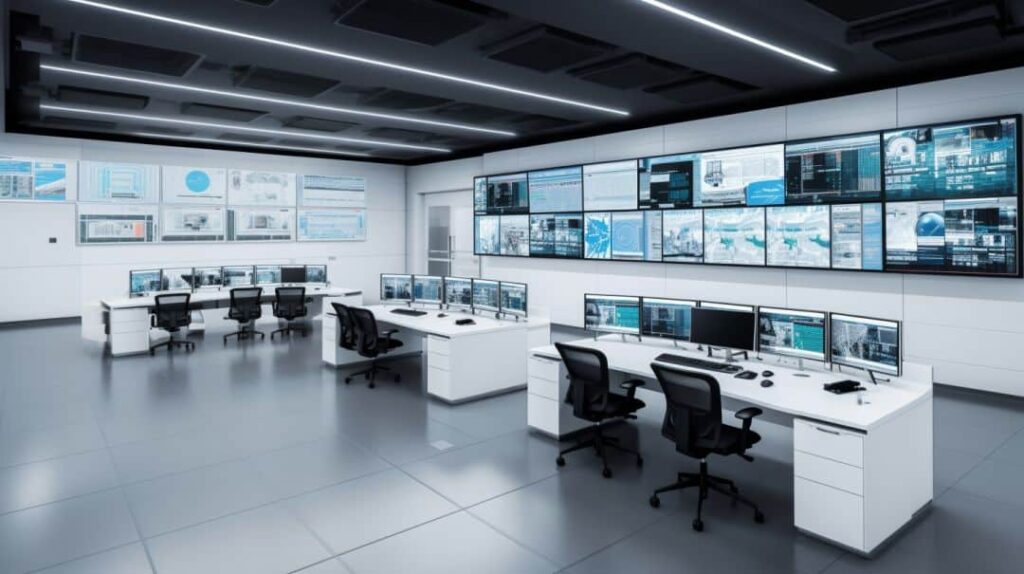
Selecting the appropriate network video recorder depends on factors like camera setup, storage requirements, and remote access needs:
Considering Camera Compatibility
Ensure the NVR works with your existing or planned camera models and supports all needed features:
- Camera resolution and frame rates
- Wired vs wireless cameras
- Power over Ethernet (PoE) support
- Audio capture capabilities
- Analog camera support via encoders
- Camera manufacturer integration and compatibilities
Choose an NVR that seamlessly integrates all the cameras you need.
Storage Capacity and Resolution
Calculate storage needs based on video resolution, retention period, and number of cameras:
- Higher resolution uses more storage space per camera
- Determine minimum days of footage to store
- Allow room to expand storage in the future
Select an NVR with adequate onboard storage bays for drives to fulfill capacity requirements.
Remote Access Capabilities
Determine required capabilities for remote viewing and management via web or mobile apps:
- Bandwidth needed for simultaneous video streaming
- Advanced remote functionality needed (PTZ, alerts, 2-way audio, etc.)
- Number of concurrent remote users supported
- Integration with centralized management software
Opt for an NVR model that enables secure remote access with needed capabilities at scale.
Choosing the right NVR means matching technical specifications to your current and future surveillance system needs. Our security experts can help assess requirements and recommend ideal NVR solutions. Contact Jefferson Security Cameras today for a free consultation.
NVR vs DVR: Which One is Right for You?
Network video recorders (NVRs) and digital video recorders (DVRs) take different approaches to recording and managing surveillance camera footage. Should you choose an NVR or DVR solution? Here is a comparison of key factors:
Comparison of Features and Benefits
NVRs
- Record digitized video packets from IP cameras
- Offer remote accessibility via web or mobile apps
- Support scaling to large multi-camera systems
- Enable integration with other IP-based systems
- Provide intelligent analytics like smart search
- Allow flexible cloud storage options
DVRs
- Record analog video signals converted to digital
- Only permit local viewing on DVR device
- Limited scalability due to analog cabling
- Lack advanced analytics and integration capabilities
- Typically cheaper initial purchase cost
In summary, NVRs unlock more powerful features through IP networking and digitized video. DVRs are simpler standalone analog recording solutions.
Factors to Consider When Choosing
Go with an NVR if you need:
- Remote viewing access
- Scalability beyond 8-16 cameras
- Intelligent analysis like motion search
- Integration with access control, POS, alarms etc.
- Cloud storage and offsite redundancy
A DVR may suffice if:
- Only local onsite viewing is needed
- Limited budget for initial cost
- Analog cabling infrastructure already exists
- Expanding beyond 8 cameras is unlikely
Migrating from analog DVR to NVR offers major enhancements in capabilities. But DVRs can serve basic standalone recording needs at low upfront cost.
Evaluate current and future system requirements to decide between advanced NVR systems and basic DVR recorders. Our security consultants can help assess your needs and priorities. Contact Jefferson Security Cameras today to discuss the ideal video surveillance solution.
Evaluate current and future system requirements to decide between advanced NVR systems and basic DVR recorders.
Key Questions to Consider:
- Do you need remote access to camera feeds?
- Will you expand beyond 8-16 cameras in the future?
- Is centralized management important for multi-camera setups?
- Do you want intelligent analytics like customized motion alerts?
- Will you implement access control, POS integration, etc?
If you answered yes to any of the above, an NVR is likely the better choice to meet both current needs and future flexibility. Their networked architecture and scalability enable adding capabilities as security priorities evolve.
For simple standalone recording, DVRs may still be suitable. But with NVR prices continually dropping, network video recorders often provide better long-term value even for smaller deployments.
Our security consultants can help assess your needs and priorities to determine the right video surveillance solution. Contact us today to discuss whether an advanced NVR system or basic DVR recorder makes more sense for your environment. We’re happy to provide recommendations tailored to your requirements.
Popular NVR Brands and Their Features
There are many NVR solutions on the market from both established and new players in video surveillance. Here is a look at some leading brands and their standout features:
Ozie Tok
- User-friendly interface and mobile app
- Focus on ease of use while retaining advanced capabilities
- Remote access with unlimited users
- Motion analytics and custom activity zones
- Flexible cloud storage integrations
Church Security Camera Systems
- Specializes in houses of worship and non-profits
- Tailored features like donations analytics
- Lifetime technical support
- Customized mobile access and controls
- Cloud hosting options for footage
Digital Watchdog
- Enterprise-grade performance and reliability
- Up to 320 channels per NVR
- Redundant power supplies and RAID options
- Integration with VMS and access control
- Extensive video analytics and audio I/O
A1 Security Cameras
- Competitively priced NVRs
- Up to 16 channels per NVR
- Motion detection alerts and email notifications
- Remote access via web browser and mobile
- Expandable with additional slave NVRs
Kintronics
- Specializes in very large megapixel camera networks
- Advanced LAN/WAN bandwidth optimization
- Up to 1200 channels per system
- Failover NVR redundancy
- Ideal for airports, universities, critical infrastructure
These are just a few of the many excellent NVR solutions available from security-focused vendors. The right choice comes down to matching capabilities and performance to your specific requirements. Our team can help identify ideal brands and models tailored to your needs. Contact Jefferson Security Cameras to discuss NVR options.
Conclusion: The Future is Networked
Network video recorders have fundamentally transformed surveillance technology, ushering in a new era of IP-based camera systems. The digitization and networking capabilities unlocked by NVRs represent a quantum leap over analog CCTV.
With their centralized management, scalable storage, remote accessibility, and intelligent analytics, NVRs provide a flexible bridge to the future. The power of NVR platforms will only expand with innovations in:
- Artificial intelligence – On-camera and NVR-level AI will enable real-time detection of people, vehicles, behaviors, and other insights not possible with traditional video analysis. This will dramatically increase the utility of footage.
- Improved compression – New video compression algorithms like H.265 drastically reduce storage needs for the same quality video. This will enable longer retention periods and more cameras on existing NVR storage.
- Higher resolutions – Increasingly affordable 6, 8, and 12MP camera models continue to improve video clarity and details. NVRs can handle the larger data streams these represent.
- Expanded integrations – NVRs will natively integrate not just with cameras and access control, but sensors, biometrics, POS, HR systems, and more. This will allow extracting value from correlated data.
- Two-way interfaces – More interactive NVR interfaces will evolve with capabilities like touchscreen live views, instant replay of clips, integrated real-time collaboration, and more.
- Infrastructure convergence – NVR systems will tap into shared IP data infrastructure for connectivity, power, DNS services, etc. for simpler management.
The possibilities are endless with the networked foundation of NVR platforms. For those looking to maximize ROI in video security technology, NVR systems are the clear choice now and into the future.
Jefferson Security Cameras stays on the cutting edge of NVR innovations. Contact us to discuss how the latest surveillance advances can address your unique needs. Our team will help design an intelligent NVR ecosystem tailored to your environment and priorities.
FAQs
What are the advantages of an NVR over a DVR?
NVRs unlock more advanced features like remote viewing, scalability, intelligence analytics, integration with other IP systems, and more flexible storage options compared to analog DVRs. The networked digital capabilities of NVRs far surpass older DVR technology.
How much storage do I need for an NVR system?
As a rule of thumb, plan for about 1TB of storage per high-definition camera to store 30 days of continuous footage. Add more storage if you need longer retention periods or have many cameras. Leverage the NVR’s scalable internal bays.
Can I access my NVR system remotely?
Yes, a key benefit of NVRs is enabling remote access from anywhere via web browser or mobile apps. Securely view live or recorded footage from any internet-connected device.
What internet connection speed do I need for good NVR performance?
At minimum, plan for 10Mbps upload speed per high-definition camera stream accessed concurrently. Faster connections provide better remote performance.
How hard is it to migrate from a DVR to an NVR system?
Switching to an NVR is fairly straightforward. NVRs can integrate analog cameras via encoders until you transition completely to IP models. The backend cabling and hardware change but the user experience remains familiar.

